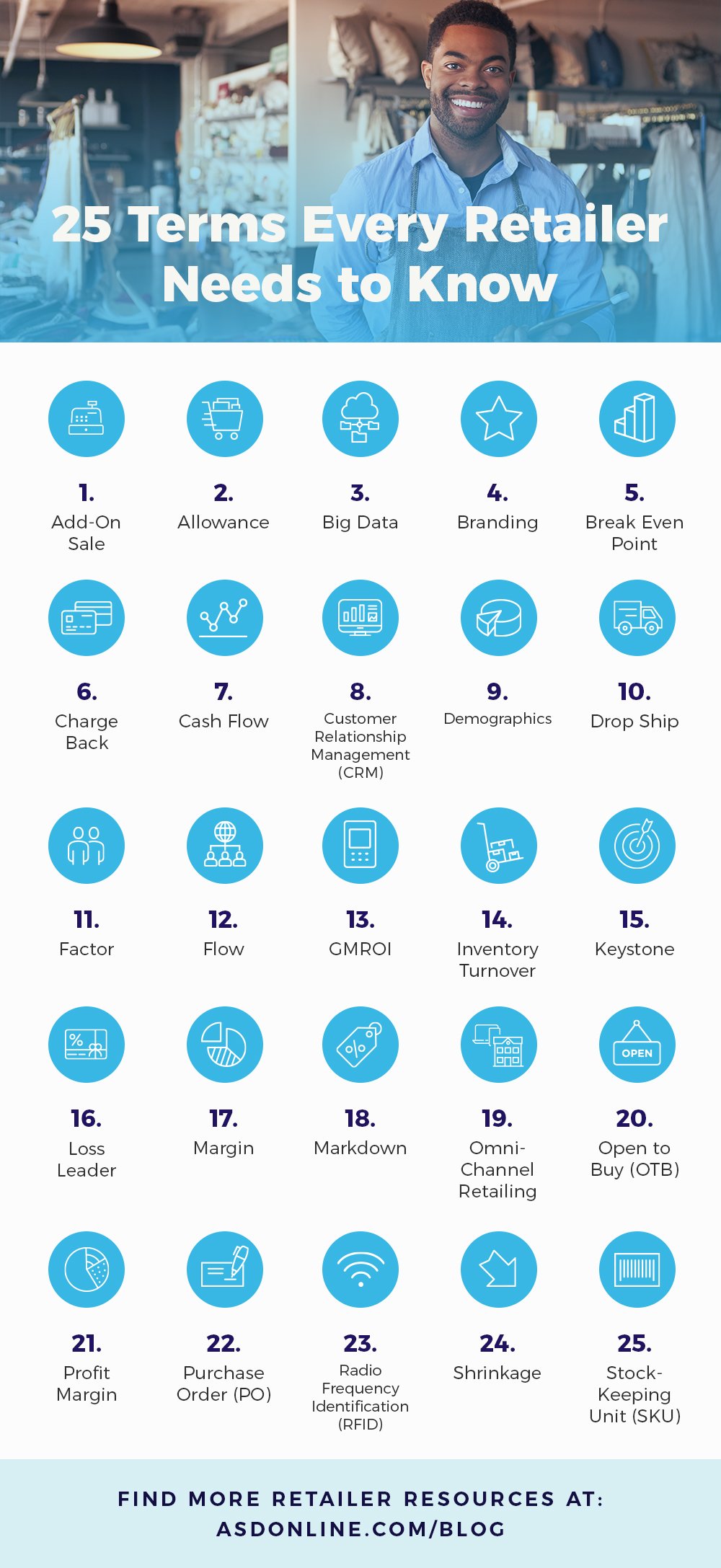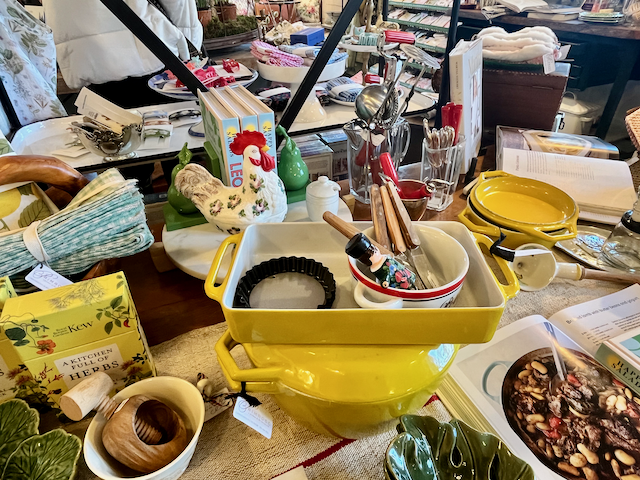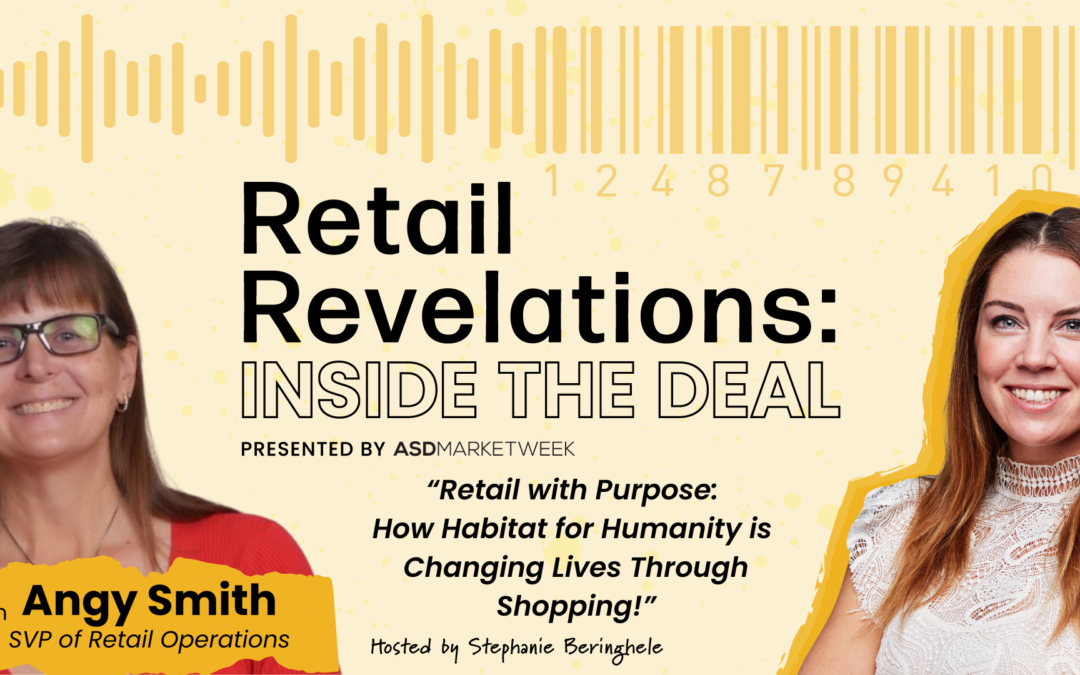At ASD Market Week, we do all we can to ensure the success of our retailers and exhibitors. Nothing beats a face-to-face conversation when it comes to understanding and meeting a retailer’s needs. And in order to meet a retailer’s needs, you must be able to speak a retailer’s language.

To help, we’ve outlined the top 25 retail terms every exhibitor at a trade show like ASD Market Week needs to know:
1. Add-On Sale. Items customers buy in addition to items they originally came in to purchase because a store associate suggested that they buy them. Adding-on is an easy way to increase your average sales and store profits.
2. Allowance. Price reductions that are taken for numerous reasons, including but not limited to: damaged or discontinued merchandise, floor samples, or late delivery of product.
3. Big Data. Large amounts of data that is analyzed to reveal patterns and trends that relate to human behavior and interactions. Data may include online consumer behavior such as clicks, open rates, the length of time a person spends on a website, income, and Census info, as well as what happens on social media. Big Data is often referred to as “Analytics on Steroids”.
4. Branding. A brand is not a logo or slogan or merely the name of a store. A brand is the emotional connection – the physical reaction – customers feel when they hear your name, see your logo, visit your website, or walk in your front door or booth. It’s the concept you own in the mind of the customer; it’s the experience they can get only from you.
5. Break Even Point. The point where your sales are equal to your expenses. In other words, when a store has no profit and no loss.
6. Charge Back. A deduction taken by a retailer on an invoice to account for instances including freight allowances, short orders, damaged merchandise and more.
7. Cash Flow. Money that comes into a store, and goes back out again, resulting in available cash.
8. Customer Relationship Management (CRM). A business strategy utilizing techniques designed to build profit by keeping customers loyal to a store.
9. Demographics. The population categorized in groups by age, gender, income, occupation, education, religion, race, family size, lifestyle, and more. Understanding demographics is helpful in determining which products and services to offer to the various consumers in a community.
10. Drop Ship. Items not stocked by a retailer that are shipped to the consumer directly from the manufacturer or distributor.
11. Factor. A bank or finance company that buys the receivables from a manufacturer. Retailers pay the factor for goods purchased instead of paying a vendor directly.
12. Flow. How shoppers move through a store. People shop a store’s sales floor according to how fixtures are set, creating flow.
13. GMROI. Gross Margin Return on Investment is commonly defined as “an inventory profitability evaluation ratio that analyzes your store’s ability to turn inventory into cash above the cost of the inventory.”
14. Inventory Turnover. “Turn” is the amount of times in a specific time period that inventory is sold and replaced with fresh product.
15. Keystone. The retail price charged for an item that is double the wholesale price.
16. Loss Leader. An item that is sold at a loss in order to attract more shoppers to the store.
17. Margin. The amount of gross profit that is made when an item is sold. Retailers want high margins.
18. Markdown. The permanent lowering of the price of a product because it did not sell at full price. Markdowns are necessary in retail to clear inventory and make room for new items.
19. Omni-Channel Retailing. Establishing a retail presence on several channels and/or platforms. For example, having a brick-and-mortar store, an online store, mobile ordering capabilities, online services, and more that enable customers to engage and interact with a retailer across several channels.
20. Open to Buy (OTB). Merchandise that is budgeted for purchase during a specific period of time that has not yet been ordered. OTB helps retailers budget and plan for future purchases. Retailers typically come to ASD Market Week with a specified Open to Buy dollar amount.
21. Profit Margin. The amount out of every dollar of sales a business actually keeps as earnings.
22. Purchase Order (PO). The form retailers use to place orders for goods and/or services. POs list the type, quantity, and agreed upon price for goods and/or services the seller will provide to the buyer. (Note: We always recommend that retailers use their own PO when placing an order.)
23. Radio Frequency Identification (RFID). A chip embedded in an item’s label or packaging that contains important information about the product. It is used primarily for tracking purposes.
24. Shrinkage. The difference between the amounts of merchandise a store shows on paper and the physical stock on the sales floor and/or back room. This difference is generally caused by shoplifting, employee theft, and administrative errors.
25. Stock-Keeping Unit (SKU). An item’s identification code that can be found on tags and/or bar codes that help the retailer track the item for inventory. A SKU lists the important attributes of an item, such as style number, vendor, size, color, etc.
This post was contributed in 2015 by Georgeanne Bender. It’s been updated in 2018 and 2022.
There are many more retail terms, and more are constantly added as new technologies are introduced. Be sure you keep up with all that retail and ASD has to offer by exhibiting at the upcoming ASD Market Week in Las Vegas.
Apply to exhibit at ASD Market Week








0 Comments